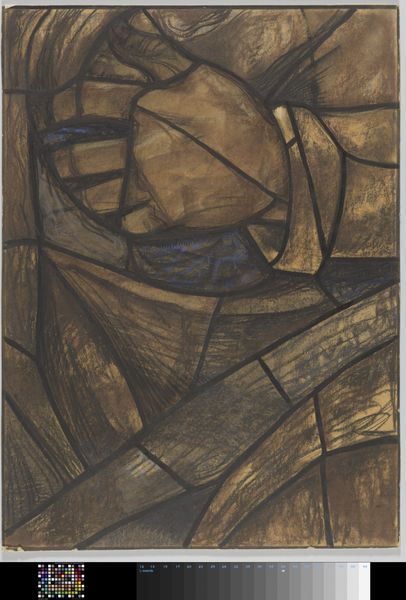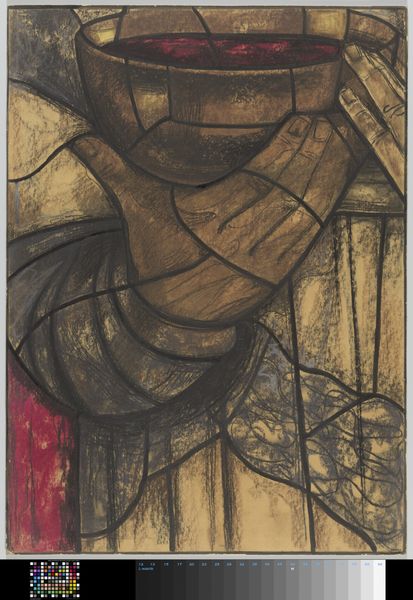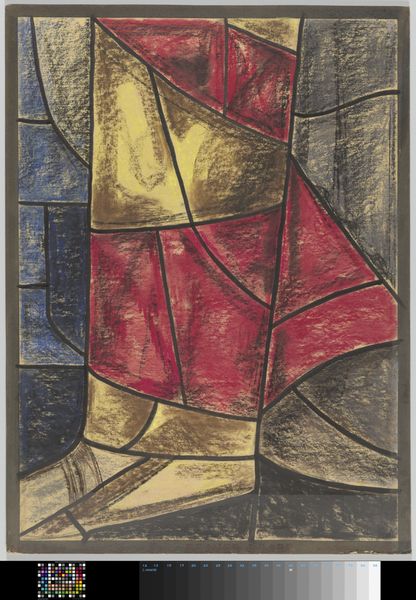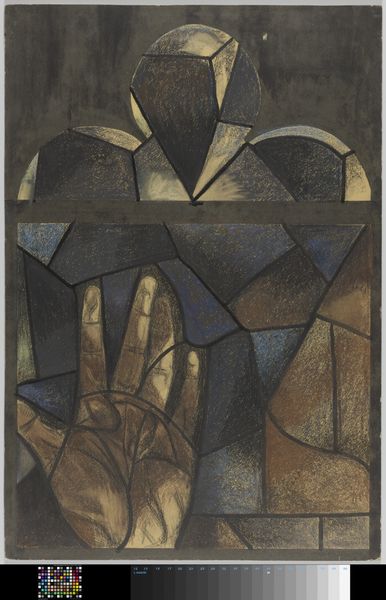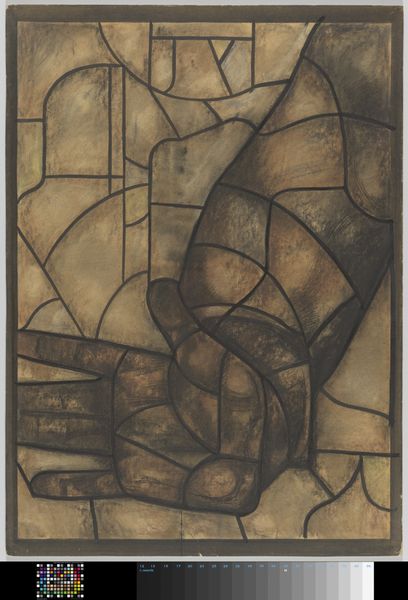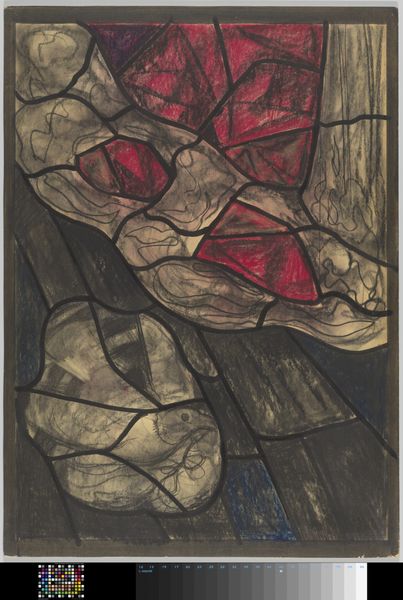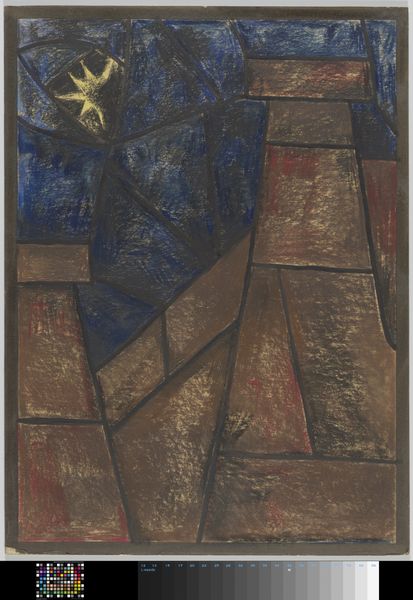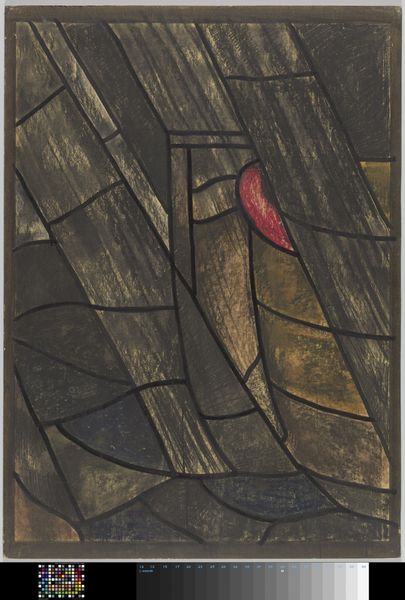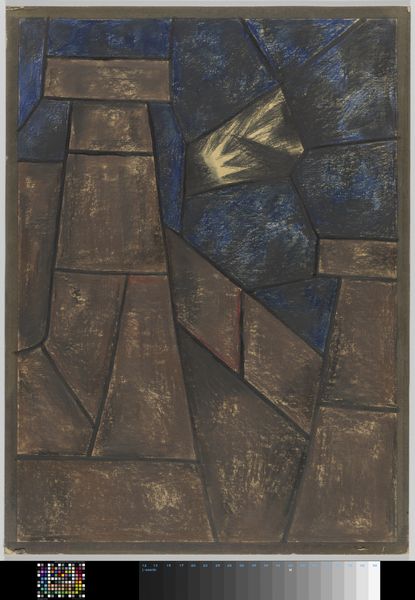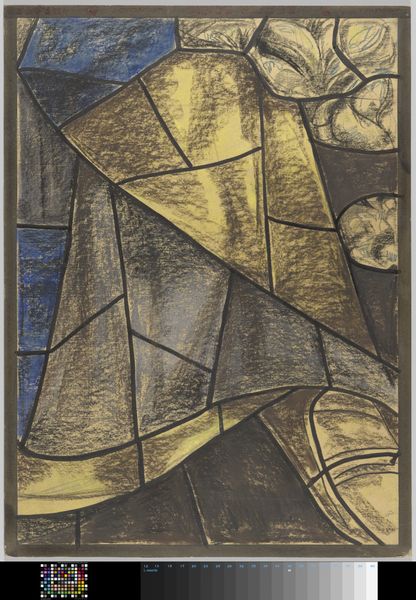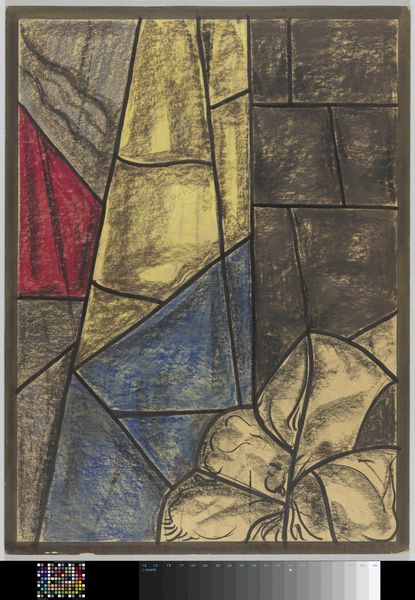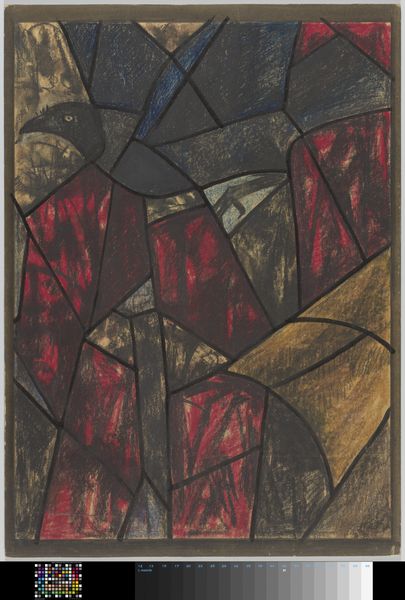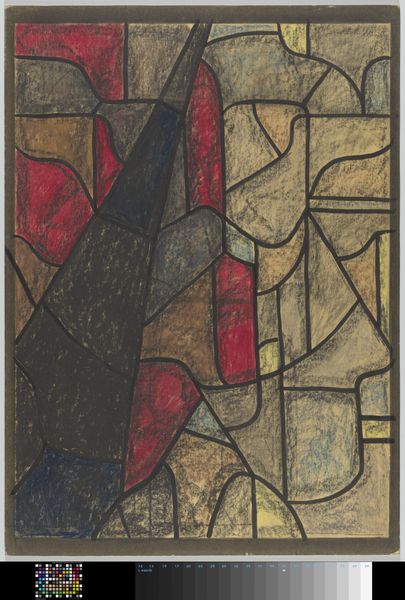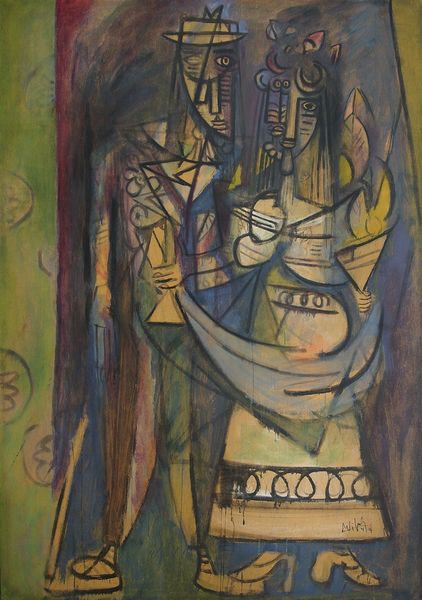
Ontwerp voor raam in het Zuidertransept van de Dom te Utrecht 1878 - 1938
0:00
0:00
richardnicolausrolandholst
Rijksmuseum
drawing, mixed-media, paper, pastel
#
drawing
#
mixed-media
#
figuration
#
paper
#
form
#
symbolism
#
pastel
Dimensions: height 1085 mm, width 725 mm
Copyright: Rijks Museum: Open Domain
Editor: So, here we have Richard Nicolaüs Roland Holst’s "Ontwerp voor raam in het Zuidertransept van de Dom te Utrecht," created sometime between 1878 and 1938. It's a mixed media piece using pastel and drawing on paper. The use of hands is immediately striking; it feels like a blessing or a symbolic exchange. How do you interpret this work, particularly given the context of its intended location within the Utrecht Cathedral? Curator: It’s essential to remember that Holst was working during a period of intense national and religious revival. The Dom was not merely a church; it was a symbol of Dutch national identity, heavily influenced by socio-political forces. This design for a stained-glass window is particularly interesting when you consider the role stained glass played in medieval cathedrals – illustrating biblical stories for a largely illiterate population, reinforcing the power of the Church and, by extension, the ruling elite. How does Holst's symbolic rendering, as opposed to narrative scenes, interact with this history? Editor: That's a great point. So, instead of depicting a specific story, he's using the symbolic power of hands – one pointing upwards, perhaps to God, and another in a receiving gesture. Does that imply a change in the public role of art? Curator: Precisely. Holst moves toward Symbolism, prioritizing feeling and spiritual communication over literal representation. Notice the abstraction of forms – they aren't quite realistic. Considering the historical context of rising secularism, do you see his choice as a personal expression of faith, or an attempt to grapple with broader cultural shifts, repurposing religious symbols for a modern, perhaps less theologically rigid, audience? Editor: I think it's both. He is grappling with faith in the face of modernity. I hadn’t considered the symbolism from that historical lens before. Curator: Examining the socio-political landscape enriches our perception, right? Considering art’s public role unveils layered meanings beyond the purely aesthetic. Editor: Absolutely. I’ll definitely keep that in mind.
Comments
No comments
Be the first to comment and join the conversation on the ultimate creative platform.
